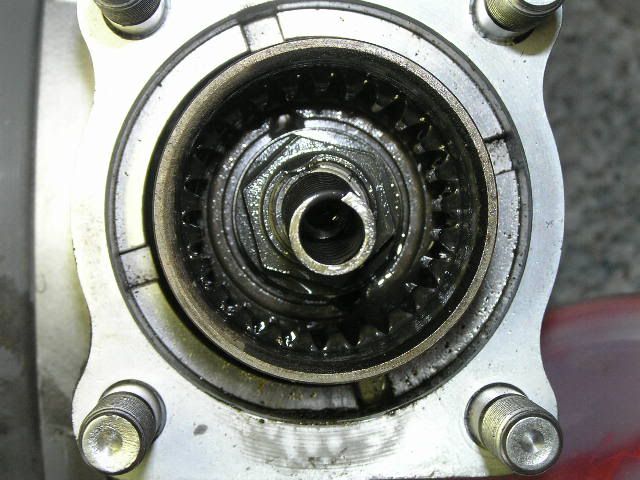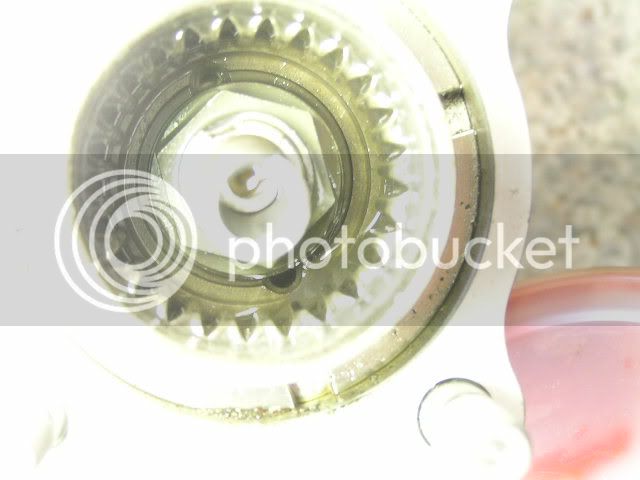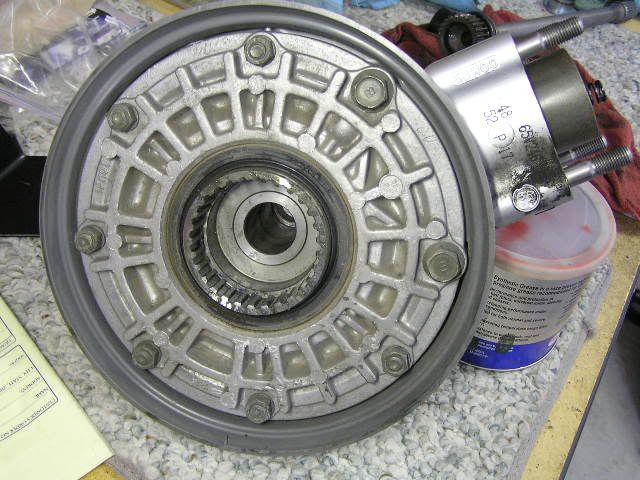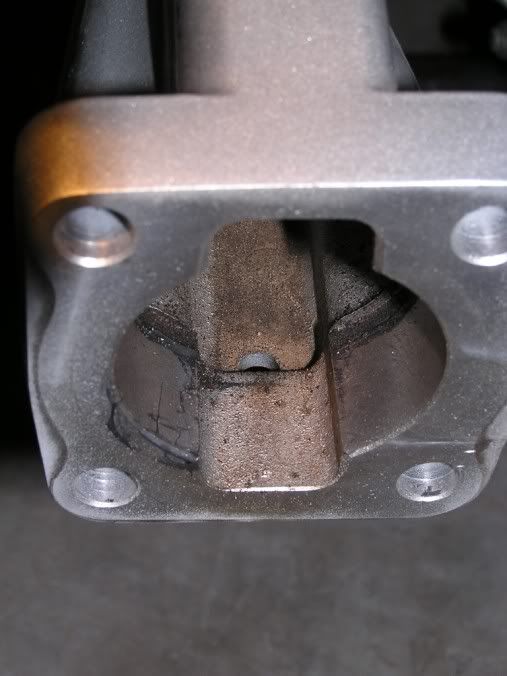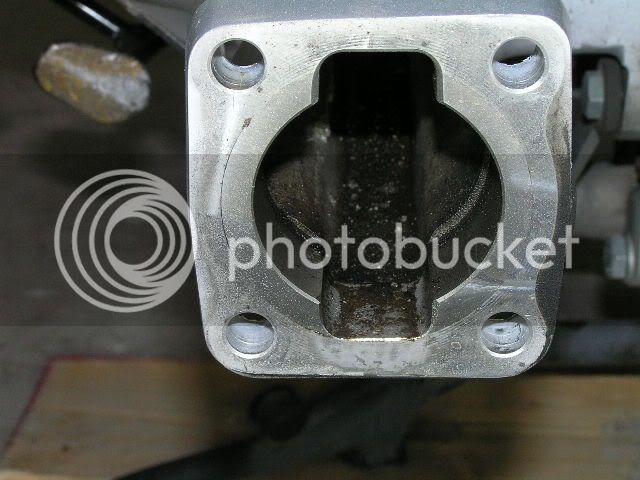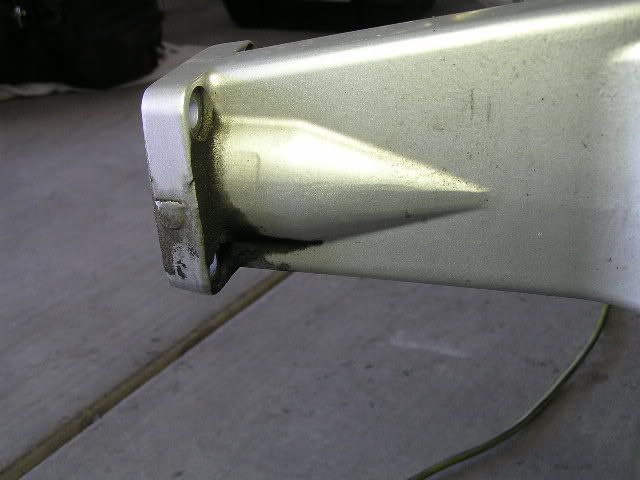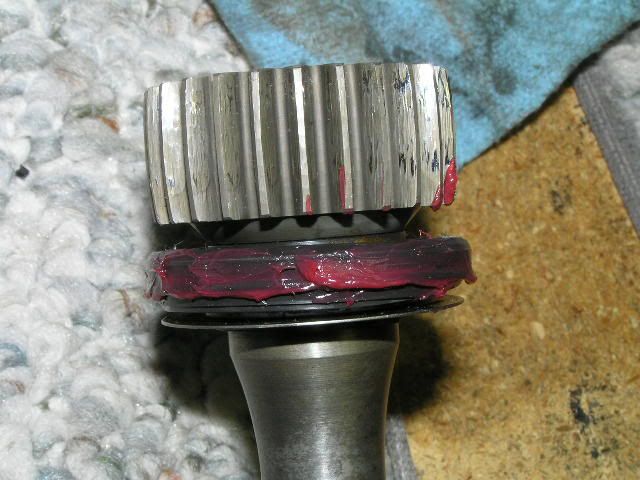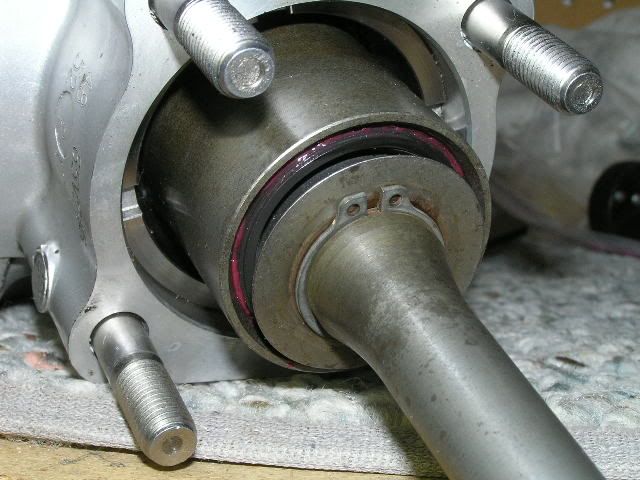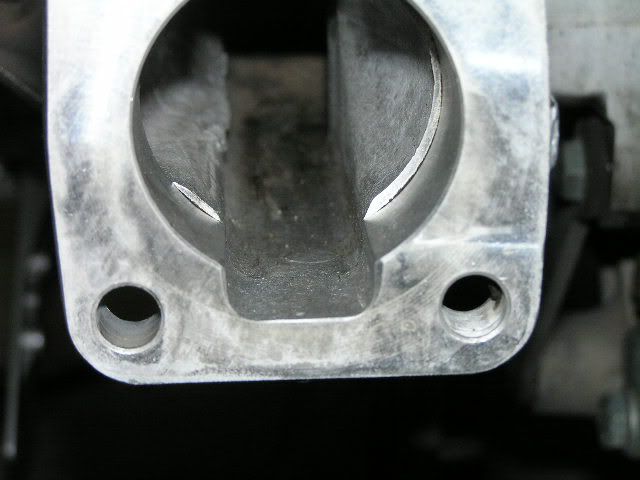SkooterG
Purveyor of Crooked Facts
[SIZE=14pt]Driveshaft/Gear Coupling/Final Drive 101[/SIZE]
There has been some discussion recently on lubrication and disassembly of the driveshaft, gear coupling, and final drive, or “pumpkin”. Good info was muddled in many pages of posts. So here is a new topic to get to the heart of the matter, and hopefully explain everything in a clear and useful, and of course, accurate way.
For reference, you should first be familiar with Warchild’s FJRTech.com write-up on driveshaft spline maintenance which you can find at the following link: FJRTech.com Spline Maintenance How-To
Most driveshaft spline maintenance discussions center around the forward part of the driveshaft where it inserts into the universal joint at the forward part of the swingarm. These forward driveshaft splines have had instances of no, or very little lube right from the factory, and also corrosion. That it why it is suggested you follow Warchild’s above article every once and a while to check the condition of these splines, and re-lube if necessary.
Also a good idea is to service the universal joint every once and a while as Bounce details at this link: Bounce's Universal Joint Service How-To
So what is at the rear of the driveshaft? There has been much discussion and debate about this. It is the purpose of this write-up to provide clear information as to what’s going on back there.
Here is a pic of the driveshaft, gear coupling, and pumpkin removed from the swingarm:
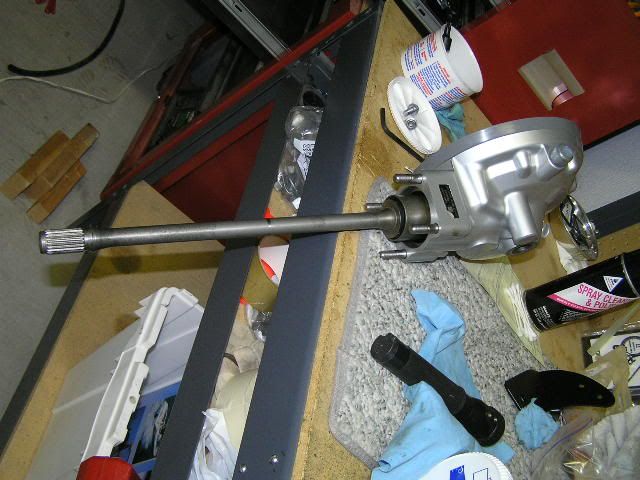
Simply, the driveshaft at it’s rear, enters the gear coupling, which connects to the pinion gear inside the pumpkin, or final drive. For reference, below is a picture of the inside of the pumpkin or final drive. It shows the ring and pinion gears. These are lubricated by the oil in the final drive. Between the pinion gear and the rear of the driveshaft is the gear coupling.
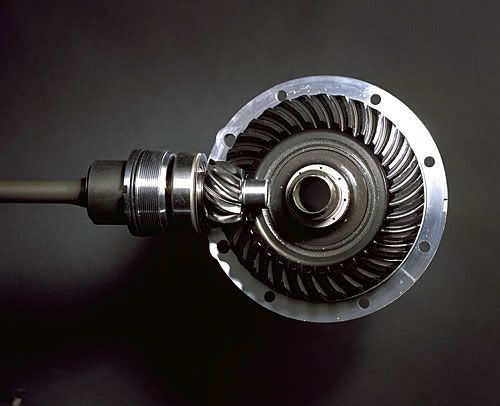
[SIZE=14pt]DRIVESHAFT[/SIZE]
What has been the cause of much debate, is what is at the rear of the driveshaft? Well, there are splines at the rear of the driveshaft, and they then mate to splines inside the gear coupling.
Here is a photo of the driveshaft, removed from the gear coupling. Front to the right, rear to the left:
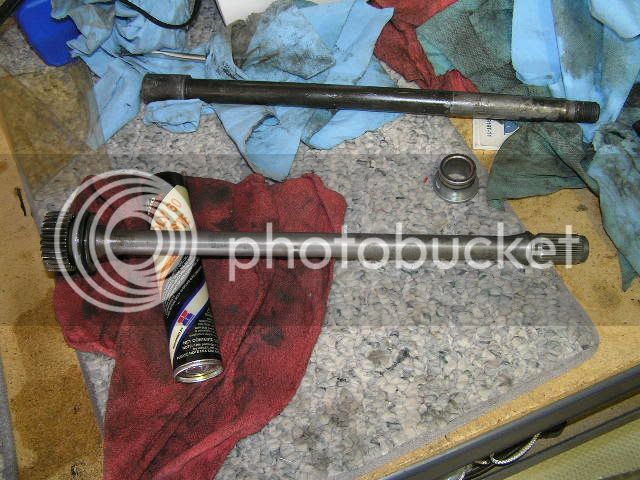
Here are close-up photos of the rear of the driveshaft splines, and the splines inside the gear coupling:
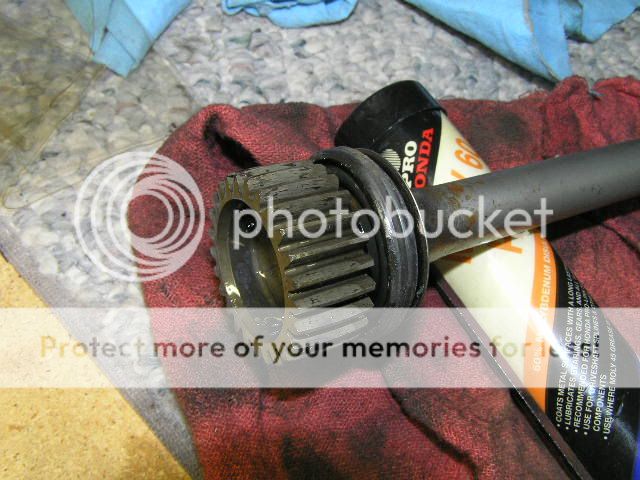
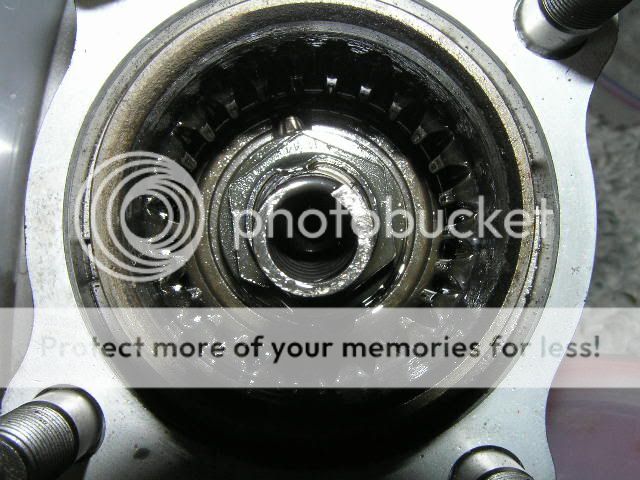
And here is a photo of the pumpkin, and gear coupling with the driveshaft removed. See the spring in the center of the gear coupling? That is there to keep the driveshaft under tension as the swingarm pivots from normal movement. Any fore and aft movement of the driveshaft caused by the swingarm’s pivoting is done in the gear coupling with aid of the spring, and not at the universal joint. The spring is actually putting some pressure to push the driveshaft out of the gear coupling.
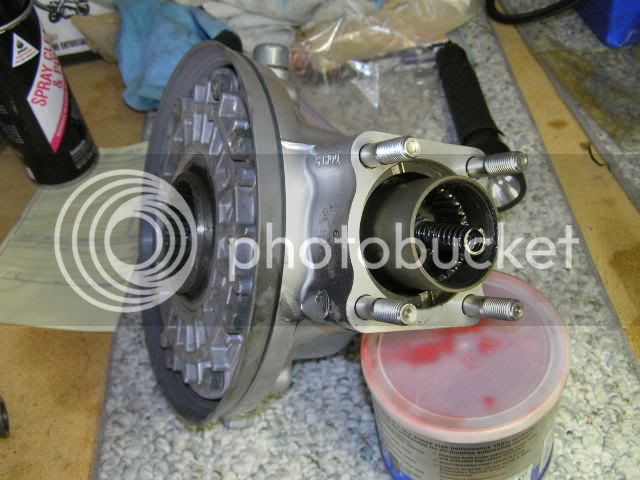
So what holds the rear of the driveshaft into the gear coupling? Nothing but the rubber oil seal that is attached to the rear of the driveshaft. That’s it. It is due to this fact that when disassembling the pumpkin assembly from the swingarm, one must exercise caution: The driveshaft can very easily pull out of the gear coupling when you are not expecting it. (As several have reported happening) Be careful so as not to drop the pumpkin on your foot or make a mess. Conversely, it can sometimes be quite difficult to pull the driveshaft out of the gear coupling if your rubber oil seal is old and knarly. For example, below is a photo of my driveshaft and the oil seal. This was disassembled for the first time after 21/2 years and 64,500 miles of ownership. It was very difficult for me to pull the driveshaft out of the gear coupling, taking almost all my strength (admittedly not much). Still, it was almost as bad as trying to pull twowheelnut away from gerbils at a pet store.
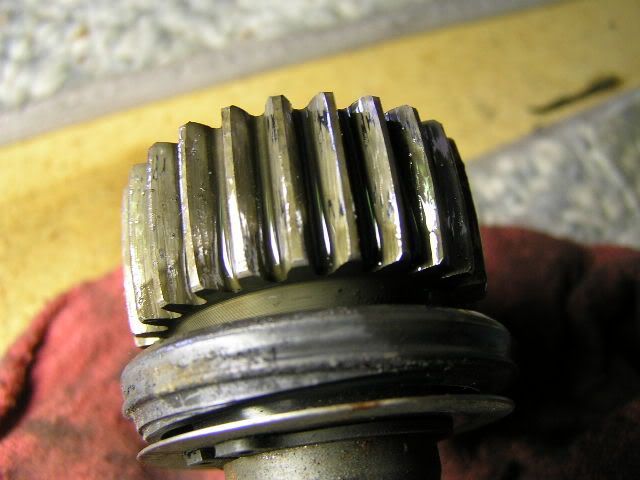
So at the rear of the driveshaft are the splines, a rubber oil seal, and then a washer and circlip. The washer and circlip are there to hold the oil seal in place.
Here is a close-up of the washer and circlip, and then the rubber oil seal:
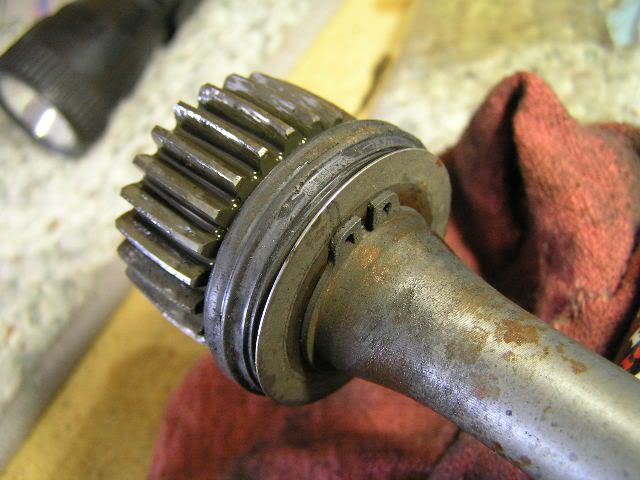
And here, I am pulling back the outer portion of the oil seal so you can see where the inner part of the oil seal is resting against the washer.
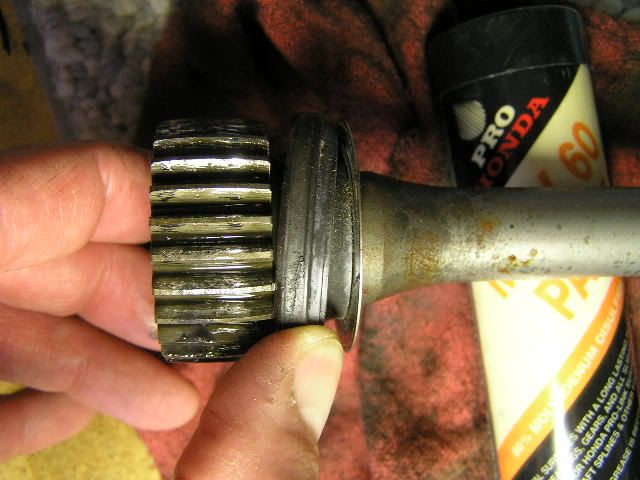
There has been some discussion recently on lubrication and disassembly of the driveshaft, gear coupling, and final drive, or “pumpkin”. Good info was muddled in many pages of posts. So here is a new topic to get to the heart of the matter, and hopefully explain everything in a clear and useful, and of course, accurate way.
For reference, you should first be familiar with Warchild’s FJRTech.com write-up on driveshaft spline maintenance which you can find at the following link: FJRTech.com Spline Maintenance How-To
Most driveshaft spline maintenance discussions center around the forward part of the driveshaft where it inserts into the universal joint at the forward part of the swingarm. These forward driveshaft splines have had instances of no, or very little lube right from the factory, and also corrosion. That it why it is suggested you follow Warchild’s above article every once and a while to check the condition of these splines, and re-lube if necessary.
Also a good idea is to service the universal joint every once and a while as Bounce details at this link: Bounce's Universal Joint Service How-To
So what is at the rear of the driveshaft? There has been much discussion and debate about this. It is the purpose of this write-up to provide clear information as to what’s going on back there.
Here is a pic of the driveshaft, gear coupling, and pumpkin removed from the swingarm:

Simply, the driveshaft at it’s rear, enters the gear coupling, which connects to the pinion gear inside the pumpkin, or final drive. For reference, below is a picture of the inside of the pumpkin or final drive. It shows the ring and pinion gears. These are lubricated by the oil in the final drive. Between the pinion gear and the rear of the driveshaft is the gear coupling.

[SIZE=14pt]DRIVESHAFT[/SIZE]
What has been the cause of much debate, is what is at the rear of the driveshaft? Well, there are splines at the rear of the driveshaft, and they then mate to splines inside the gear coupling.
Here is a photo of the driveshaft, removed from the gear coupling. Front to the right, rear to the left:

Here are close-up photos of the rear of the driveshaft splines, and the splines inside the gear coupling:


And here is a photo of the pumpkin, and gear coupling with the driveshaft removed. See the spring in the center of the gear coupling? That is there to keep the driveshaft under tension as the swingarm pivots from normal movement. Any fore and aft movement of the driveshaft caused by the swingarm’s pivoting is done in the gear coupling with aid of the spring, and not at the universal joint. The spring is actually putting some pressure to push the driveshaft out of the gear coupling.

So what holds the rear of the driveshaft into the gear coupling? Nothing but the rubber oil seal that is attached to the rear of the driveshaft. That’s it. It is due to this fact that when disassembling the pumpkin assembly from the swingarm, one must exercise caution: The driveshaft can very easily pull out of the gear coupling when you are not expecting it. (As several have reported happening) Be careful so as not to drop the pumpkin on your foot or make a mess. Conversely, it can sometimes be quite difficult to pull the driveshaft out of the gear coupling if your rubber oil seal is old and knarly. For example, below is a photo of my driveshaft and the oil seal. This was disassembled for the first time after 21/2 years and 64,500 miles of ownership. It was very difficult for me to pull the driveshaft out of the gear coupling, taking almost all my strength (admittedly not much). Still, it was almost as bad as trying to pull twowheelnut away from gerbils at a pet store.

So at the rear of the driveshaft are the splines, a rubber oil seal, and then a washer and circlip. The washer and circlip are there to hold the oil seal in place.
Here is a close-up of the washer and circlip, and then the rubber oil seal:

And here, I am pulling back the outer portion of the oil seal so you can see where the inner part of the oil seal is resting against the washer.

Last edited by a moderator:




